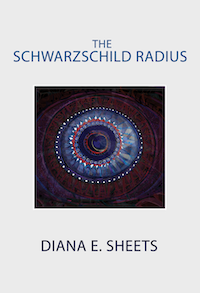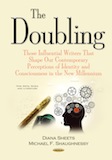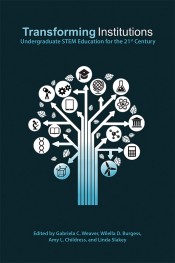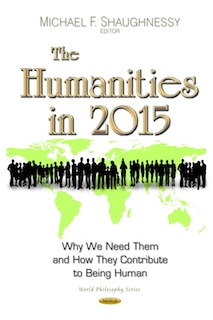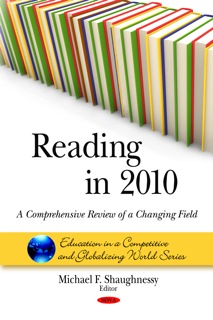Righteous Battles: The Foundations of Political Warfare in the 2012 Presidential Election
Copyright © 2012 by Diana E. Sheets
The 2012 Presidential Election will not only be close but also potentially one of the most fiercely fought in years (Nate Silver, “Election Forecast: Obama Begins With Tenuous Advantage,” June 7, 2012, The New York Times, http://fivethirtyeight.blogs.nytimes.com/2012/06/07/election-forecast-obama-begins-with-tenuous-advantage/; Alan I. Abramowitz “Fasten Your Seat Belts: Polarization, Weak Economy Forecast Very Close Election,” July 12, 2012, Sabato’s Crystal Ball, http://tinyurl.com/94q7mzj; Jim Rutenberg and Allison Kopicki, “Polls Underline Stubborn Splits in 3 Key States,” August 8, 2012, The New York Times, http://www.nytimes.com/2012/08/08/us/politics/polls-see-sharp-divide-in-3-swing-states.html?pagewanted=all). Democrats and Republicans are at loggerheads on almost every issue. The election outcome will almost certainly be determined by the votes of independents. Nevertheless, the political campaigns are being waged on polarizing issues that these days define the positions of the two major parties. For the Democrats the emphasis is on promoting social justice and on expanding the services of the welfare state so that everyone has access to education, healthcare, unemployment benefits, and social security regardless of one’s ability to pay for these services and, indeed, the status of one’s citizenship. For the Republicans the focus is on restoring the economy. This, they argue, will be achieved by self-reliance and entrepreneurial acumen fostered by a minimum of taxation while aggressively curtailing entitlement spending in order to pay down America’s crippling debt.
If the Democratic or “progressive” vision of our nation is founded—as George Lakoff suggests in Moral Politics—on a feminized characterization of the state as a “Nurturant Mother” bestowing beneficent care on its citizens, her children, then the Republican or conservative representation of the nation is based on a hierarchical model of the family with a “Strict Father” whose wife and children submit to his authority (University of Chicago Press, 1996, 15, 65-6). From this manly perspective “life is difficult and the world is fundamentally dangerous” (65). The conservative worldview presumes a willful exertion of power from America’s leaders—our symbolic “fathers”—in order to keep chaos at bay (33, 65-70).
Not surprisingly, as Lakoff noted, the words chosen by Democrats and Republicans are oppositional, reflecting their gender divide. Democrats are more likely to use the terms that embody their feminized and child-centric worldview: “empathy,” “nurture,” “fairness,” “protect,” “social responsibility,” and “happiness.” Conservatives, on the other hand, prefer words that reflect their more masculine perspective: “discipline,” “self-reliance,” “character,” “responsibility,” “competition,” and “freedom.” (See my essay posted on Literary Gulag about the 2008 presidential election and the importance of Lakoff’s Moral Politics, “Politics & Literature: Framing the Political Narrative for Victory in the 2008 Presidential Election,” http://www.literarygulag.com/blog/show/22.)
What motivated Lakoff to write Moral Politics was a desire to analyze how the Democratic Party could go from presidential and congressional victory in 1992 when Bill Clinton was elected President to a stunning defeat just two years later when Republicans, for the first time since 1954, seized control of both houses of Congress. Lakoff’s assessment? Language—words chosen—and narrative—stories told—subliminally shape our emotional perceptions about which politicians reflect our values and worldview. Lakoff’s argument was simple: conservatives were more effective in choosing words and framing stories to sway voters. Or as James Carville, the principal political strategist for Clinton in his 1992 presidential campaign, commented about the successful strategy of conservatives in woeful contrast to Democrats, “They produce a narrative, we produce a litany” (Geoffrey Nunberg, Talking Right: How Conservatives Turned Liberalism Into a Tax-Raising, Latte-Drinking, Sushi-Eating, Volvo-Driving, New York Times-Reading, Body-Piercing, Hollywood-Loving, Left-Wing Freak Show, Public Affairs, 2007, 14).
In the aftermath of Republican George W. Bush’s eight years as president, the Democrats were determined to beat Republicans at their own game. Not surprisingly the 2008 presidential election in which Democratic nominee Barack Obama faced off against Republican contender John McCain, the campaign was waged not over the candidates’ policies and positions—for John McCain and even Hillary Clinton had far more national political experience than Barack Obama—but over emotional perceptions of which candidate was more appealing and which might better address public fears and anxieties about the economy.
Certainly the 2008 economic meltdown swayed many voters to ally with Democrats, but this would not have happened except that the nominee, Barack Obama, was successfully pitched as the candidate best suited to offer “hope” and “change.” This was exemplified in the iconic Obama campaign poster designed by Shepard Fairey that alternatively featured one of three Democratic mantras: “hope,” “change,” and “progress.” The candidate Barack Obama was youthful and charismatic. He promised to shift the political parameters from divisive rancor to post-partisan equanimity. His memoir was less a story of his life in politics—since he was a neophyte to the national scene—than a journey of novelistic “interiority” that was remarkably devoid of realpolitik and factual substance while deeply steeped in literary consciousness and youthful ardor. In other words, it was a bildungsroman of a post-racial, post-national, post-partisan political candidate in the making (see my essay ”Storytelling, Memoir, and the 2008 Presidential Election,” http://www.literarygulag.com/blog/show/23).
Barack Obama’s 2008 brand may best be characterized as “academic virtue” (read my assessment in Edward Luce’s “Person of the Year: Barack Obama,” Financial Times, 12/23/2008, http://www.ft.com/intl/cms/s/0/7d93a336-d02e-11dd-ae00-000077b07658.html#axzz22GItWCYW), a moral and political righteousness that promised to end world strife, economic woes, racial acrimony, and lift us blissfully into a state of well-being that approximated post-millennial nirvana. Steeped in social justice and cultural relativity, Obama’s worldview was the personification of Fareed Zakaria’s The Post-American World and the Rise of the Rest conferring, as it did, the specter of a great nation in decline and all the consequences thereof (W. W. Norton & Company, 2008).
With the 2012 presidential election occurring just weeks from now and the election being waged with bitter intensity on both sides over two very different and competing visions of America, what, may we ask, is at stake in the war between Democrats and Republicans, and why should it matter?
Lakoff illuminated their differences in worldviews and how these influenced the outcome in elections. However, he failed to explain the underlying causes for our political polarization. Why, in other words, “Can’t we all get along?” For answers to this dilemma we need to consider the ideas and arguments made by moral psychologist Jonathan Haidt in his book The Righteous Mind: Why Good People Are Divided by Politics and Religion (Pantheon Books, 2012).
To understand what is driving these fundamental conflicts, Haidt wants us to delve deeply into the nature of the human psyche. Here is the crux of his argument. We are not just moral but “intrinsically moralistic, critical, and judgmental” (xiii). Indeed, it is our righteous minds, Haidt suggests, that “made it possible for human beings—but no other animals—to produce large cooperative groups, tribes, and nations without the glue of kinship” (xiii). Why? Because it is through moral reasoning and judgment that we obtain agreement that enables us to establish social norms. However, moral reasoning does not come naturally to us. Indeed, it is frequently the servant to our moral emotions, something we employ to persuade others. Thus we reason, suggests Haidt, “not to help us find truth but to help us engage in arguments, persuasion, and manipulation in the context of discussion with other people.” In other words, as Hugo Mercier and Dan Sperber, cognitive scientists from France, concluded after reviewing research on the mistakes and biases in reasoning, “skilled arguers . . . are not after the truth but after arguments supporting their views” (89).
For this reason Haidt wants us to understand that “intuitions come first, strategic reasoning second” (xiv). The metaphor he employs is that of a rider on top of an elephant. The rider, who represents our conscious thinking and decision making, believes himself in charge. Nevertheless, it is the elephant, the beast with considerable size and mass, who determines our unconscious reasoning that governs much of what we do. For it is the elephant that controls “99 percent of mental processes,” that is, “the ones that occur outside of awareness but that actually govern most of our behavior” (xiv). For while we make moral judgments quickly and easily, we often have trouble explaining what motivates our actions, in large part because we are not conscious of the emotional reasoning driving our behavior (xiv, 36-40).
For liberals—those “Western, educated, industrialized, rich, and democratic” peoples (WEIRD)—the approach to moral reasoning is vastly different than that of people who live in traditional societies (96). Liberals are more analytic. Their moral reasoning is “individualistic, rule-based, and universalist” (97). They perceive themselves as acting of their own free will rather than as part of a group whose tribal values must prevail (97-8). The result is that the moral matrix in academe and the liberal/progressive circles that heavily populate Western civilization is fundamentally rooted in the Care/harm foundation (care for others, do no harm) followed closely by the Liberty/oppression principle (overcome oppression even, if necessary, at the cost of limiting some personal liberties). So while the Fairness/cheating axis is important, it may be jettisoned for the “most sacred value” of the Liberal Moral Matrix: “Care for victims of oppression” (296-7). Not surprisingly, John Stuart Mill is the patron saint for liberals since he saw the use of power in society as justifiable only “to prevent harm to others” (165).
For social conservatives, Haidt contends, the moral matrix is more complex than that of liberals since it applies almost equally across six foundations: Care/harm, Liberty/oppression, Fairness/cheating, Loyalty/betrayal, Authority/subversion, and Sanctity/degradation (306). The conservative patron saint, suggests Haidt, is not John Stuart Mill but Émile Durkheim who based the foundations of moral reasoning in society upon the “hierarchically structured family” (165). For the social conservative the greatest threat to an individual is becoming unencumbered by ties and obligations to social institutions in the community and, therefore, susceptible to “anomie,” a moral and social normlessness inherently destructive of society. For as Durkheim noted in 1897, “man cannot become attached to higher aims and submit to a rule if he sees nothing above him to which he belongs. To free himself from all social pressure is to abandon himself and demoralize him” (165-6).
Thus, for Durkheim society needs not only the Care and Fairness foundations but also Loyalty, Authority, and Sanctity (166). Sanctity, founded on religious beliefs, as Haidt notes, is not always appreciated or understood in a secular society. Nevertheless, it is the social foundation that binds a civil society, the process by which the many (pluribus) becomes the one (unum), thereby uniting us as a people (166). Let us repeat: Sanctity binds. It enables us to form and maintain moral communities (149). Or as Haidt argues, “Nations decline or divide when they stop performing this miracle” (166).
Perhaps the greatest challenge in Haidt’s Righteous Minds is his attempt to reconcile the Libertarian Moral Matrix with the Social Conservative Matrix and the Liberal Moral Matrix since the perspectives of libertarians straddle the viewpoints of both social conservatives and liberals while clearly belonging to neither. While many might consider libertarians today to be naturally aligned with conservatives, the libertarian might rightly be characterized as Durkheim’s preeminent antisocial loner. For the libertarian, individual liberty is his most cherished sacred value. Economic freedom is also embraced by libertarians—who emphasized it a bit more than conservatives and a great deal more than liberals. Libertarians, like their liberal counterparts, score poorly on Loyalty, Authority, and the Sanctity foundations while scoring even lower than social conservatives on the Care foundation (301). Libertarians score relatively highly on the Fairness/cheating foundation since they fiercely defend their economic and social liberties against societal claims for redistributive social justice (301-3).
Haidt’s analysis of libertarians—and by implication his implicit assessment of the Tea Party—suffers because the Liberty/oppression foundation is for him an afterthought, a category added after the five moral foundations for liberals and conservatives had been posited (see Chapters Seven and Eight). This ex-post facto inclusion and associated analysis weakens Haidt’s argument while, nevertheless, preserving his assessment about the causes driving partisan strife today.
The moral foundations for liberals, conservatives, and libertarians, as Haidt understands them, are fundamentally different. Given that humans are creatures prone to forming associations, teams, tribes, and spiritual communities that reinforce their social beliefs, it follows not only that “there’s more to morality than harm and fairness” but also that “morality binds and blinds” (xiv-xv). As the political left and right have become increasingly polarized in recent years, their moral matrices have significantly diverged making it increasingly difficult for political narratives to unite partisan believers across the political divide. For, as Haidt notes, as we join a group we “increase similarity, not diversity” activating our hive mentality, which reinforces common beliefs and perceptions that everyone is part of a team. Competition is exerted between groups not within (239). Given that politics and religion support these hive collectivities, it makes it increasingly difficult to encompass diverse beliefs that are antithetical to group bonding within the hive.
In the WEIRD societies, secularism is embraced while sanctity and religious institutions are not. Since members of religious institutions are more civic minded than their secular counterparts, the loss, as measured in terms of social unity, cohesion, and well-being, is substantial. For as David Sloan Wilson argues in Darwin’s Cathedral: Evolution, Religion, and the Nature of Society (University of Chicago Press, 2002), religions have been very effective in promoting group cohesion, facilitating the division of labor, encouraging cooperation, and promoting prosperity (reference cited in The Righteous Mind, 259). However, social connectedness, while promoting unity, sometimes exerts a great toll on those outside the sacred circle (The Righteous Mind, 268).
Haidt questions whether society as a whole can prosper without the benefits of religious institutions that foster sacred ties, responsibility, and a willingness to devote money and resources toward the community while promoting offspring and curbing antisocial impulses (259, 263-269). No wonder, therefore, that Haidt, who has acknowledged that he intends to vote for Obama in November (Interview by Andrew Goldman, “A Liberal Learns to Compete,” The New York Times Magazine, July 27, 2012, http://www.nytimes.com/2012/07/29/magazine/a-liberal-learns-to-compete.html), nevertheless, concludes that the Social Conservative Matrix is more nuanced than its liberal counterpart and that secular Western societies would do well to reinforce the Liberty, Loyalty, Authority, and Sanctity foundations (The Righteous Mind, xiv-v).
Haidt’s strengths are his quantitative methodological rigor—more apparent in his journal publications than in The Righteous Mind—his expert knowledge of moral psychology, and his familiarity with the related disciplines of sociology and anthropology. Regrettably he interleaves his personal story into what should be a scholarly book, thereby diminishing the book’s academic rigor. Haidt should have revised The Righteous Mind prior to publication so that the inclusion of the Libertarian Moral Matrix does not appear as if it is a post-hoc rationalization.
Nevertheless, the greatest weakness of The Righteous Mind is the book’s a-historical character. Haidt never discusses why WEIRD societies jettisoned Western Civilization and how this has contributed to the political divisiveness today. For the reader must understand that the bonds that unite a society and its citizens must continually be renewed with each successive generation. Thus it is critical that students read about the American Revolution, the history of the formation of our nation and the contributions made by the Founders, as well as the pain and tragedy associated with slavery and our Civil War. Students need to learn about World War I and II, what contributed to our rise in global stature, and what has challenged our superpower stature in the aftermath of Vietnam, the fall of the USSR, September 11th 2001, and the 2008 meltdown of our economy.
The teaching of our history from colonial to post-colonial to our nation’s assumption of global power and the prospect of our demise as a superpower must be considered anew. Until the early 1960s liberals and conservatives learned and understood the same narrative of our nation even if we often disagreed about party platforms and policies. But beginning in the 1960s and certainly by the late 1980s, WEIRD societies have embraced the belief that Western Civilization is a hegemonic culture that has oppressed other nations and peoples and concluded that our heritage offers little in the way of mitigating virtues. Nevertheless, most Americans educated through the 1960s with some knowledge of our culture implicitly understand the concerns of historian Arthur Schlesinger who argued that identity politics and political correctness were undermining not only our appreciation of our heritage but also our ability to function as a society (The Disuniting of America: Reflections of a Multicultural Society (W. W. Norton & Company, 1991).
But by the beginning of the 1990s, when Haidt acknowledges the interactions between politicians of different camps became increasingly acrimonious (310-11), Americans had been divested of their common culture, a shared agreement about our history that framed our social and political narrative. Instead, as Drew Westen noted, we became a bifurcated society with thirty percent of Americans embracing socially conservative values and another thirty percent of Americans advocating redistributive social justice and identity politics while elections increasingly hinged on the independent voters who might be persuaded to vote for either side (The Political Brain: The Role of Emotion in Deciding the Fate of the Nation, Public Affairs, 2007, xiv). Given these escalating differences and the growing isolation of these polarized communities into politically homogenous tribal communities engaged in internecine war (Haidt, Chapters 9 & 10 on the behaviors of groups and hives), is it any surprise that the moral matrices of liberals, social conservatives, and libertarians have diverged? If only Haidt’s study had been conducted in 1959 and then again in contemporary times. Then, we would have a historical understanding of the radical discontinuity between then—when we possessed a unifying culture—and now—which is defined by the individualizing nature of WEIRD communities that have shed the bonds of commonality.
One of the great dangers to our society today is that there remain no foundational truths. We no longer have a universal history. We have no agreement about what must be the cultural and social norms that form the basis for our shared “hive” mentality (see my article “Reading and Thinking Critically in the Age of Disputation,” Critical Thinking and Higher Order Thinking: A Current Perspective, Edited by Michael F. Shaughnessy, Nova Science Publishers, 2012, 99-116). Yet without these ties that form a binding alliance there can be no civilization, no sense of unity, nothing upon which we might build an identity that allows us both substance and purpose (Allan Bloom, The Closing of the American Mind: How Higher Education Has Failed Democracy and Impoverished the Souls of Today‘s Students, Simon and Schuster, 1987. See also my essay “The Great Books and Cultural Identity: The Rise and Fall of Western Memory and Its Implications for Our Time,” Reading in 2010: A Comprehensive Review of a Changing Field, Edited by Michael F. Shaughnessy, Nova Science Publishers, Inc., 2010, 155-174).
This brings us abruptly back to the 2012 presidential election and the discontinuities of the present. The challenge of (Democrat) Barack Obama and (Republican) Mitt Romney in presenting their narratives to the electorate is to communicate their stories in such a way as to resonate with Americans in spite of our loss of common cultural, social, and political points of reference. Is that even possible?
If Barack Obama campaigning in 2008 became the candidate for “hope” and “change,” a symbolic representative of a post-racial, post-American presidency, what will be his unifying narrative for 2012 beyond the divisive claims of class warfare and redistributive social justice? Given the issues surrounding the economy, health care, immigration, energy independence, and the role of the welfare state, how will our political parties reconcile governance with endeavors to foster a green environment and a post-industrial economy that will remain globally competitive?
Can a narrative transcend the grim reality of the righteous battle between Democrats and Republicans? Will President Barack Obama convince the American electorate that he deserves a second term? Stay tuned for continuing analysis of Election, 2012: The campaign for the presidency.


